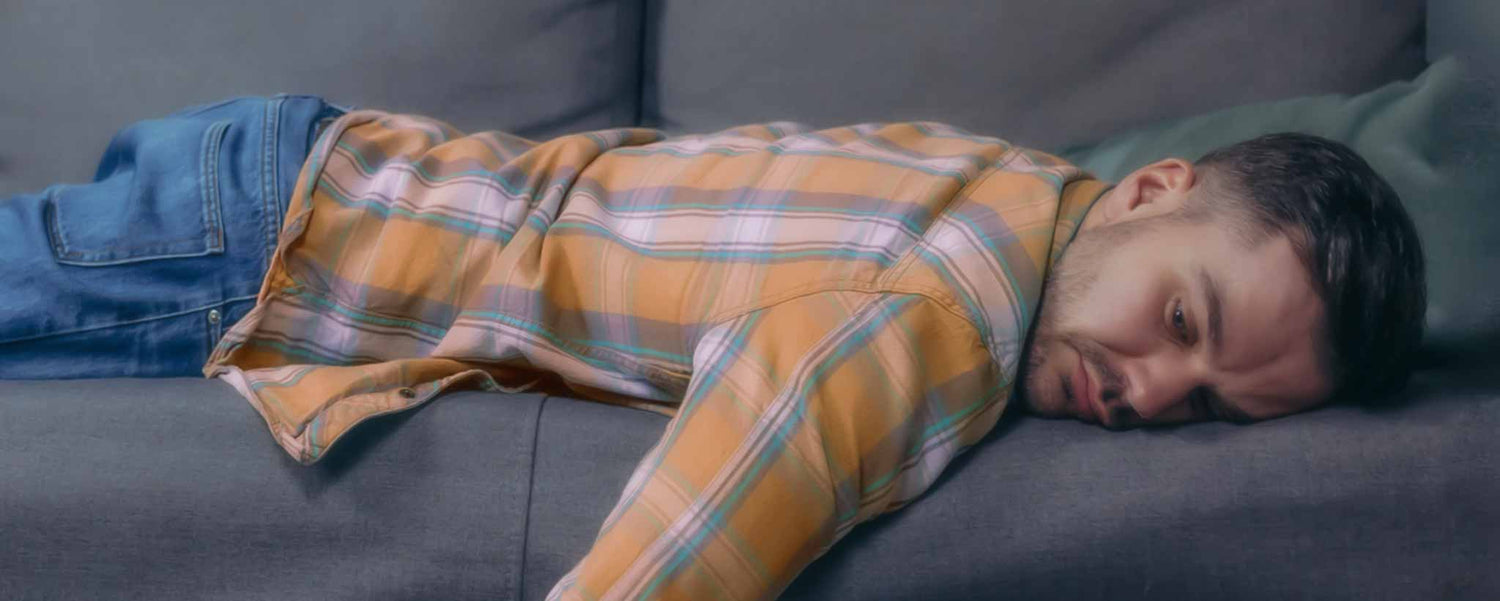Empower yourself with knowledge about rhabdomyolysis and its impact on your health to prevent and manage this serious condition.
A Guide to Recovery and Prevention
May is Myositis Awareness Month
Our bodies are intricate systems, and sometimes they send us signals that something isn’t quite right. One such signal could be rhabdomyolysis, a complex medical condition that involves the rapid dissolution of damaged or injured skeletal muscle. While the term might sound daunting, understanding rhabdomyolysis is the first step towards managing and preventing it effectively.
What is Rhabdomyolysis?
Rhabdomyolysis occurs when skeletal muscles break down rapidly, releasing a protein called myoglobin into the bloodstream. This condition is often characterized by a trio of symptoms: myalgia (muscle pain), weakness, and myoglobinuria, which gives urine a distinctive tea-like color.
The severity of rhabdomyolysis can vary, with muscle damage often measured using a marker called creatine kinase (CK). Elevated CK levels, especially exceeding 5,000 iU/L (international units per liter), can indicate significant muscle injury. However, while elevated CK levels can suggest muscle damage, they might not always correlate directly with the severity of the condition.
CK levels are the most sensitive indicators of myocyte injury. Under normal conditions, CK levels are 45–260 U/L. After rhabdomyolysis, the levels of CK can rise to 10,000–200,000 U/L or even to 3,000,000,000 U/L. —National Institutes for Health
Common Causes of Rhabdomyolysis
A range of factors that cause muscle damage can trigger Rhabdomyolysis. The good news is that understanding these causes can help us take proactive steps to prevent them. In adults, some common causes of rhabdomyolysis include:
1. Drug or Alcohol Abuse: Certain substances can stress our muscles and lead to breakdown. This includes both recreational drugs and excessive alcohol consumption.
2. Medicinal Drug Use: Some medications, especially those that impact muscle function, can contribute to muscle damage. It’s important to always follow your doctor’s instructions when taking any medication.
3. Trauma: Physical injury, like a severe accident or crush injury, can result in muscle damage and subsequent rhabdomyolysis.
4. Dehydration: Inadequate fluid intake can strain the muscles and lead to their breakdown. Staying well-hydrated is key to preventing this.
5. Hypothermia: Prolonged exposure to cold temperatures can constrict blood vessels, reducing blood flow to muscles and causing damage.
6. Immobility: Staying in one position for too long, especially during illness or recovery, can lead to muscle breakdown.
While these are common causes, rhabdomyolysis can sometimes occur for reasons that are not entirely clear – a condition referred to as idiopathic rhabdomyolysis.
Treatment and Prevention
If you suspect rhabdomyolysis or are experiencing its symptoms, seeking medical attention promptly is crucial. Treatment often involves hospitalization to ensure proper monitoring and care. In the hospital, medical professionals will focus on maintaining liver function through intravenous nutrients and addressing immediate concerns related to airway, breathing, and circulation.

Once you’ve received medical care and are on the path to recovery, your healthcare provider will offer guidance on at-home care to aid your healing journey. Here are some general tips:
1. Rest: Allow your body ample time to heal. Avoid overexertion or intense physical activity that could strain your muscles further.
2. Hydration: Drink plenty of fluids to keep your muscles well-hydrated. Opt for water and avoid dehydrating beverages containing caffeine or alcohol.
3. Medication: Follow your healthcare provider’s instructions regarding any medications. They might recommend pain relievers or other medications to aid in your recovery.
4. Prevention: If you’ve experienced rhabdomyolysis before, take steps to prevent it from happening again. Stay hydrated, avoid excessive alcohol or drug use, and maintain a healthy lifestyle.
Medical Specialties Addressing Rhabdomyolysis
Facing rhabdomyolysis might feel overwhelming, but you’re not alone on this journey. When it comes to addressing rhabdomyolysis, a multidisciplinary approach is often beneficial to ensure comprehensive care. While various medical specialties can play a role, certain fields are particularly relevant:
1. Internal Medicine: An internist is a medical doctor who specializes in adult healthcare. They can serve as your primary care provider, coordinating your overall care and ensuring that all aspects of your health are considered.
2. Nephrology: Nephrologists specialize in kidney health and function, which is crucial during rhabdomyolysis. The release of myoglobin can potentially lead to kidney complications, and nephrologists can help monitor and manage kidney function throughout your recovery.
3. Endocrinology: Since metabolic disorders or hormonal imbalances are sometimes associated with rhabdomyolysis, consulting an endocrinologist might be beneficial. They can help identify and manage underlying conditions that could contribute to muscle breakdown.
4. Cardiology: While not always directly related, rhabdomyolysis can have implications for cardiovascular health. Cardiologists can evaluate your heart health and help manage any potential cardiac complications that may arise.
5. Nutrition: A registered dietitian can guide a balanced diet that supports muscle recovery and overall wellness. They can help ensure you’re getting the right nutrients to aid in healing.
6. Physical Therapy: After the acute phase of rhabdomyolysis, a physical therapist can assist in restoring muscle strength and mobility through targeted exercises and rehabilitation.
Remember, while these specialties play important roles, they often collaborate to provide you with the best care possible. Your healthcare provider, usually an internist, can guide you in determining which specialists to consult based on your individual needs and circumstances.
Embracing a Multidisciplinary Approach
Rhabdomyolysis recovery is a journey that involves more than just physical healing—it encompasses emotional well-being, lifestyle adjustments, and ongoing monitoring. Seeking support from a range of specialists ensures that every aspect of your health is addressed, contributing to a more holistic and effective recovery.
Throughout this process, maintaining a positive outlook can make a significant difference. While challenges may arise, remember that you are taking proactive steps toward your well-being. Surround yourself with a supportive healthcare team, lean on your loved ones for encouragement, and remain open to the guidance offered by the medical professionals who are dedicated to your recovery.
Remain Positive
Studies have shown that males are more commonly affected by rhabdomyolysis, and this gender difference is attributed to various factors including differences in muscle mass, physical activity levels, and hormonal influences. However, rhabdomyolysis can still occur in females, and both genders need to be aware of the condition, its causes, symptoms, and preventive measures.
Rhabdomyolysis is a complex condition that requires a multidisciplinary approach for optimal care. Consulting with specialists such as nephrologists, internists, endocrinologists, cardiologists, and nutritionists ensures that your recovery encompasses all facets of health.
Embracing a holistic approach and remaining positive will empower you to navigate the path to recovery with confidence and resilience. Your health is a priority, and by seeking the expertise of various medical professionals, you’re taking a crucial step toward reclaiming your well-being.
To support the writing of useful articles about internist, ClinicalPosters sells human anatomy charts, scientific posters, and other products online. You may sponsor specific articles or remit a small donation.
ClinicalPosters sells human anatomy charts, scientific posters, and other products online to offset expense of the writing useful articles about internist. Slide extra posters into DeuPair Frames without removing from the wall.
Show your support by donating, shopping for ClinicalPins, or leaving an encouraging comment to keep the research going.
To support the writing of useful articles about internist, ClinicalPosters sells human anatomy charts, scientific posters, and other products online. You may sponsor specific articles or remit a small donation.
ClinicalPosters sells human anatomy charts, scientific posters, and other products online to offset expense of the writing useful articles about internist. Slide extra posters into DeuPair Frames without removing from the wall.
ClinicalPosters sells human anatomy charts, scientific posters, and other products online. You may remit a small donation.
You can support the writing of useful articles about internist by sponsoring specific articles or remitting a small donation.






 Romance & Health Intertwine. Fall in love with a captivating romance miniseries that explores the essence of well-being. Become a ClinicalNovellas library member for heartwarming tales.
Romance & Health Intertwine. Fall in love with a captivating romance miniseries that explores the essence of well-being. Become a ClinicalNovellas library member for heartwarming tales.



